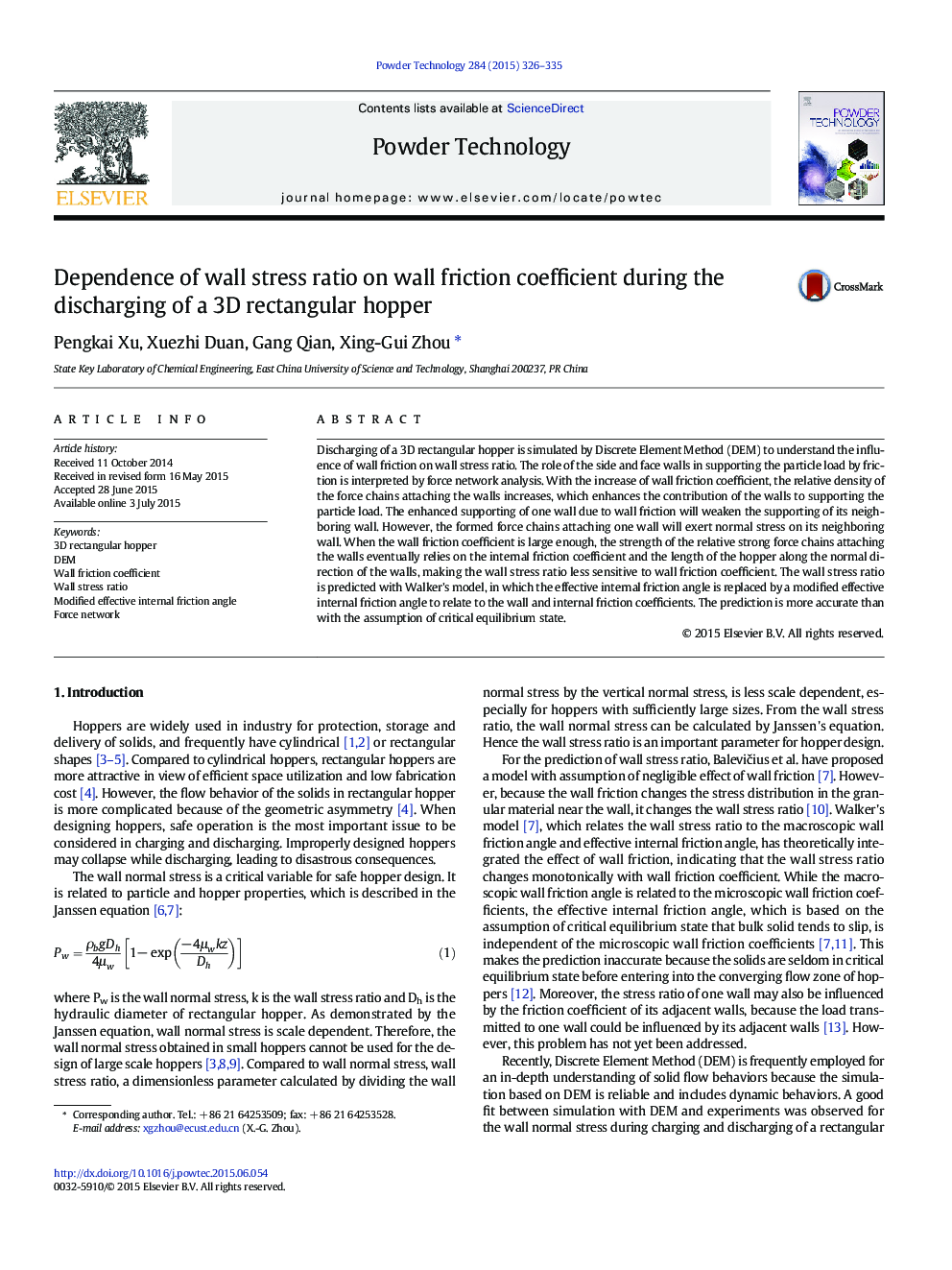| Article ID | Journal | Published Year | Pages | File Type |
|---|---|---|---|---|
| 235356 | Powder Technology | 2015 | 10 Pages |
•3D simulation of a rectangular hopper with DEM is carried out.•Influence of wall friction on wall stress ratio is analyzed by force network.•Wall friction helps forming strong force chains on the wall.•The strength of force chains is affected by inner friction and hopper dimension.•The modified effective internal friction angle is obtained to predict the wall stress ratio.
Discharging of a 3D rectangular hopper is simulated by Discrete Element Method (DEM) to understand the influence of wall friction on wall stress ratio. The role of the side and face walls in supporting the particle load by friction is interpreted by force network analysis. With the increase of wall friction coefficient, the relative density of the force chains attaching the walls increases, which enhances the contribution of the walls to supporting the particle load. The enhanced supporting of one wall due to wall friction will weaken the supporting of its neighboring wall. However, the formed force chains attaching one wall will exert normal stress on its neighboring wall. When the wall friction coefficient is large enough, the strength of the relative strong force chains attaching the walls eventually relies on the internal friction coefficient and the length of the hopper along the normal direction of the walls, making the wall stress ratio less sensitive to wall friction coefficient. The wall stress ratio is predicted with Walker's model, in which the effective internal friction angle is replaced by a modified effective internal friction angle to relate to the wall and internal friction coefficients. The prediction is more accurate than with the assumption of critical equilibrium state.
Graphical abstractFigure optionsDownload full-size imageDownload as PowerPoint slide
